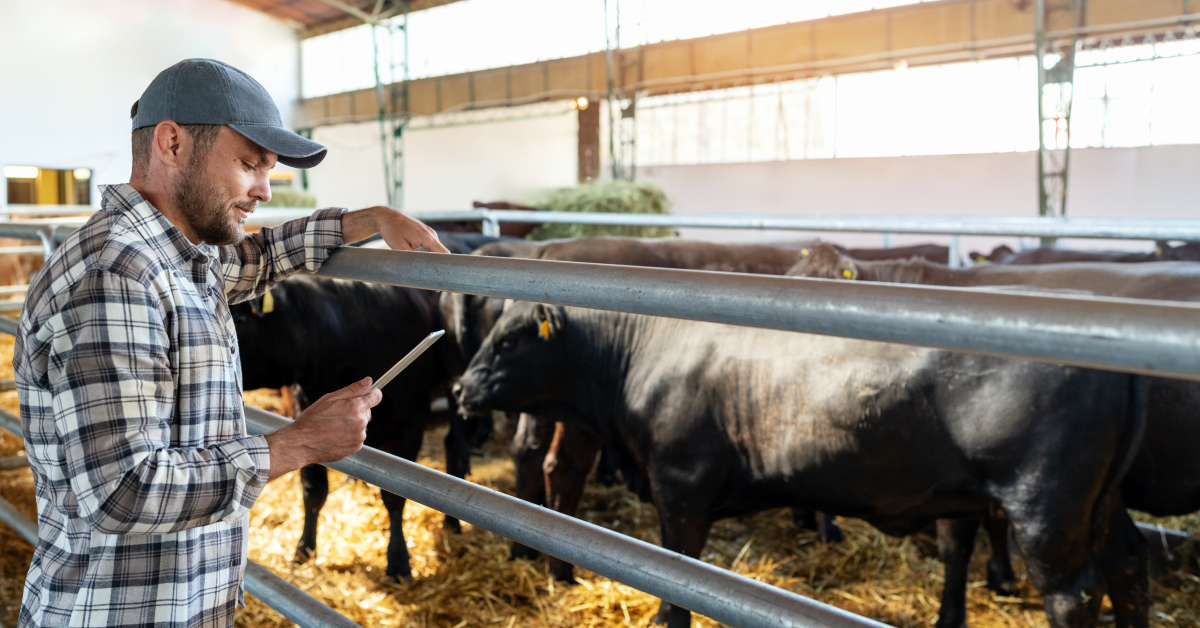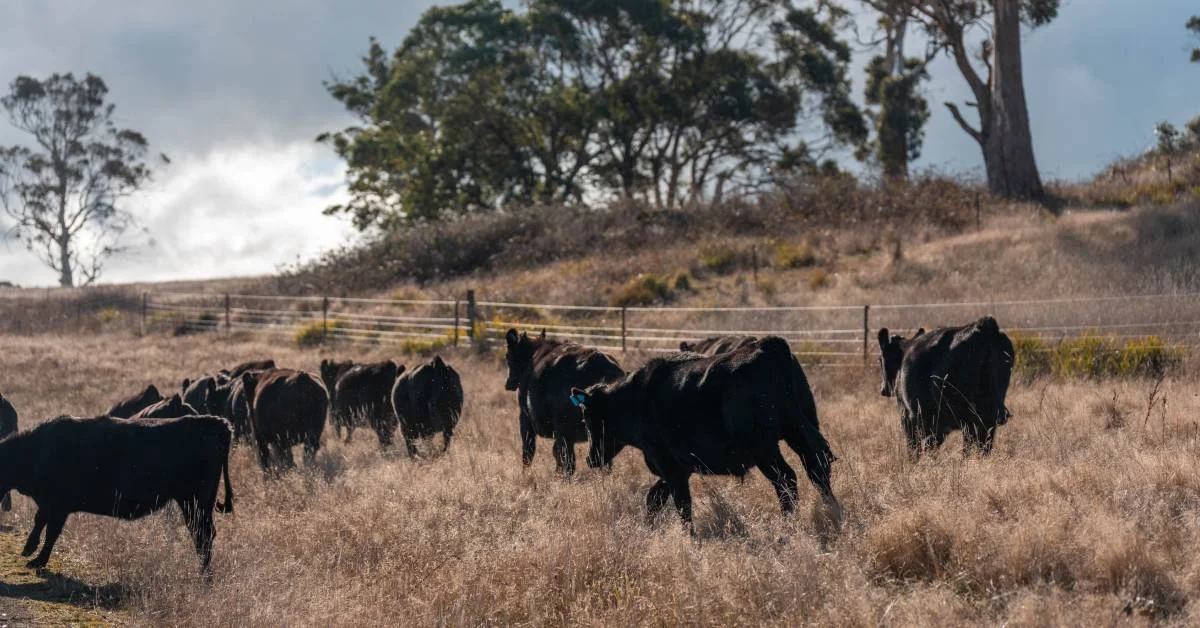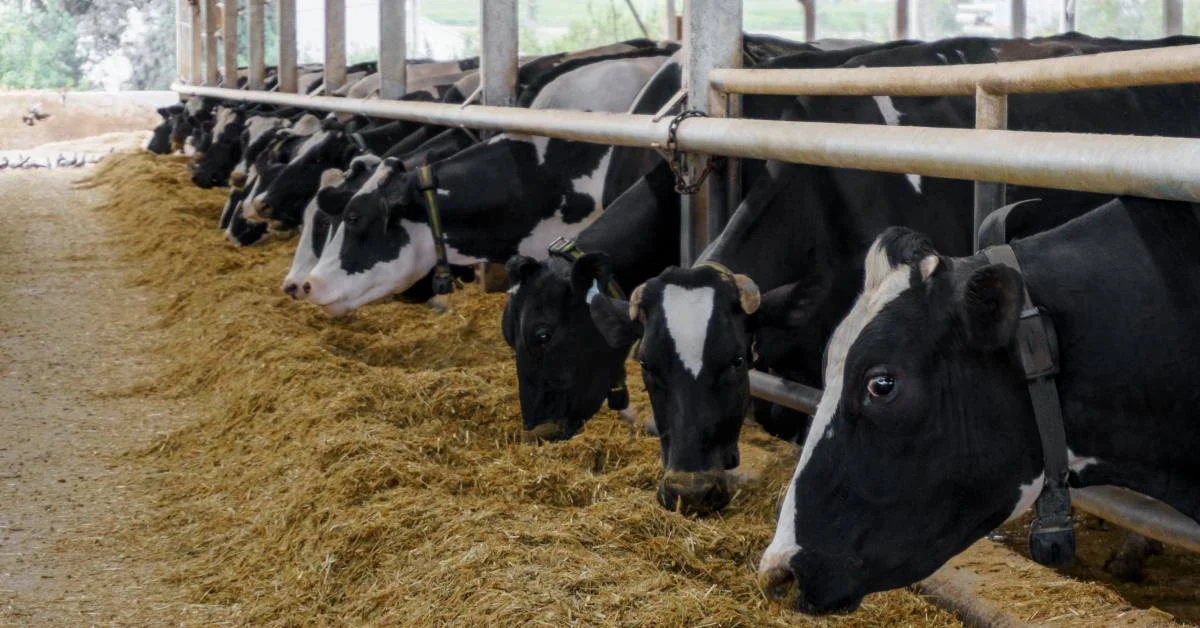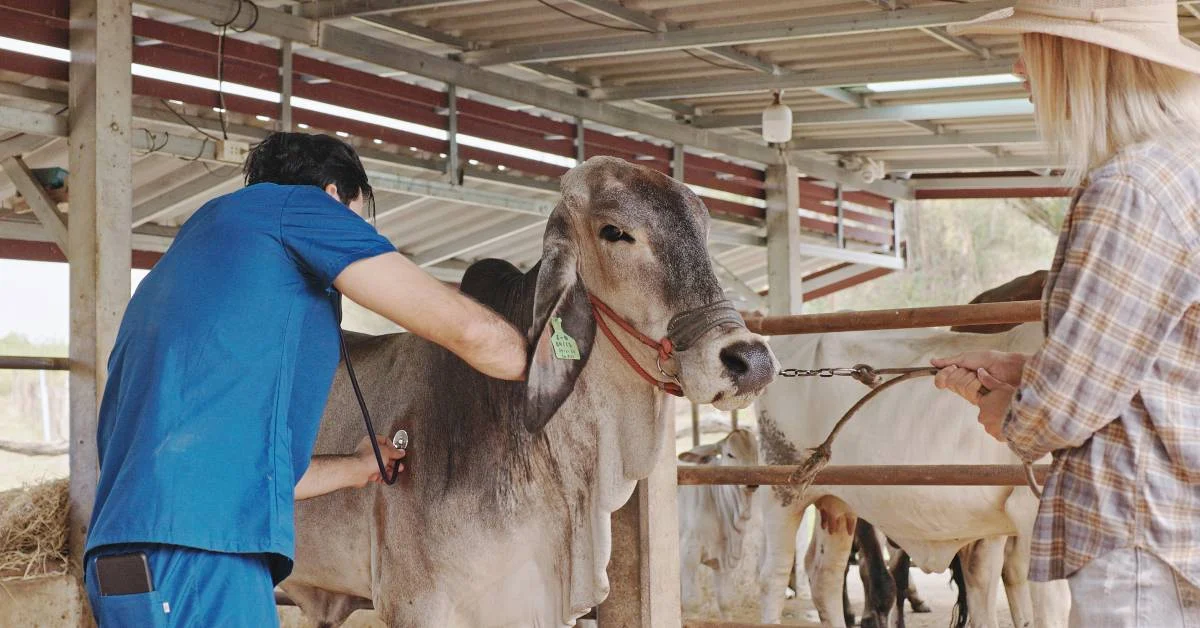The livestock industry is undergoing a profound transformation driven by the relentless march of technology. From sprawling ranches to compact farms, automation reshapes how animals are raised, cared for, and brought to market.
This shift isn’t just about efficiency but redefining the entire agricultural landscape. This blog delves into the tangible benefits and measurable return on investment (ROI) these innovations offer. So, let’s uncover how technology is turning challenges into opportunities for livestock farmers worldwide.
Overview of Livestock Farming Technology
Livestock farming is undergoing a technological revolution. Modern farms increasingly rely on digital tools and automation to optimize operations and improve outcomes.
This shift, often called precision livestock farming (PLF) or precision livestock farming technology, encompasses a range of technologies, from sophisticated sensors to advanced data analytics.
Current Trends in the Animal Industry
The industry is witnessing a surge in:
- Smart Sensors and IoT Devices: These tools gather real-time data on animal health, behavior, and environmental conditions, offering smart livestock farming.
- Cloud-Based Management Systems: These platforms store and process vast amounts of data, enabling informed decision-making.
- Artificial Intelligence and Machine Learning: These technologies analyze data patterns to predict outcomes, optimize resource allocation, and identify potential issues.
Key Benefits of Livestock Farming Technology
The integration of livestock technology into livestock farming offers a multitude of advantages that extend beyond increased efficiency. With custom software development services for agritech, farmers can significantly have the following benefits.
Improved Efficiency
Livestock farming technology is a game-changer for boosting productivity. Farmers can significantly reduce labor costs and allocate their time to more strategic aspects of their operation by automating routine tasks such as feeding, monitoring animal behavior, and managing herd health. This increased efficiency translates to higher output and lower operational expenses.
Enhanced Animal Health and Welfare
One of the most compelling benefits of livestock technology is its positive impact on animal health and welfare.
Real-time monitoring of vital signs, activity levels, and feeding patterns enables early detection of illnesses, leading to swifter interventions and improved outcomes.
Automated feeding systems ensure consistent nutrient intake, promoting optimal animal growth and development.
Data-Driven Decision Making
Technology empowers farmers to make informed decisions based on data rather than intuition. By collecting and analyzing information on animal performance, environmental conditions, and market trends, farmers can optimize breeding programs, feed formulations, and resource allocation. Predictive analytics can forecast potential challenges and opportunities, allowing for proactive management strategies.
Environmental Sustainability
Livestock farming technology plays a crucial role in promoting environmental sustainability. By optimizing feed utilization, reducing waste, and monitoring resource consumption, farmers can minimize their operation’s ecological footprint.
Additionally, precision feeding and livestock management practices can improve soil health and reduce greenhouse gas emissions.
ROI of Livestock Farming Technology
Integrating livestock farming technology delivers a substantial return on investment (ROI):
Cost Savings
A primary benefit is reduced labor costs. Automation of routine tasks frees up human resources for higher-value activities. Technology-driven disease prevention and early detection can significantly lower veterinary expenses and medication costs.
Increased Productivity
Digital livestock solutions enhance overall productivity. Optimized nutrition and health management help animals reach their full growth potential faster. Automated systems minimize downtime caused by illness or operational errors, leading to a higher yield per animal.
Long-Term Gains
The long-term advantages are equally compelling. Technology-enabled data-driven breeding programs accelerate genetic improvement, leading to superior offspring. Moreover, traceability and quality assurance systems enhance the marketability of livestock products, commanding premium prices.
Case Studies and Real-world Examples
The transformative power of livestock farming technology is more than just theoretical. Farms around the world are experiencing significant improvements by embracing these advancements.
Success Stories in Action
A prime example is Cactus Feeders, one of the USA’s largest beef and pork producers. It stands by its mission of feeding a hungry world while remaining sustainable.
With 1 out of every 25 cattle fed by Cactus Feeders, they produce more than 12 million pounds of beef and more than 2 million pounds of pork, amounting to over 56 million meals weekly! This scale of operation makes their successful implementation of Livestock Management Software by Folio3 AgTech even more impressive.
So, they implemented Folio3 AgTech’s Livestock Management Software to streamline operations and enhance animal welfare. The solution we offered helped Cactus Feeders in:
- Modernize the System: Upgraded the existing software to enhance performance and streamline pig farming processes from breeding and gestation to grow-finish.
- Redesign User Interface: Improved the user interface to be more intuitive and visually appealing, making it easier for users to navigate.
- Integrate Advanced Features: Replaced outdated technology with advanced features and updates to boost the system’s functionality and speed.
- Improve Load Time: Optimized the system to reduce load times, significantly enhancing overall performance.
Technology vs. Tradition – A Clear Advantage
Comparing technology-enabled farms like Cactus Feeders to those relying on traditional methods reveals a stark contrast. Farms with limited technology often face challenges such as:
- Labor-intensive processes: Manual tasks drain resources and limit scalability.
- Delayed disease detection: Traditional monitoring methods may miss early signs of illness, impacting animal health and productivity.
- Limited data insights: Lack of data hinders informed decision-making, leading to suboptimal herd management.
Livestock farming technology bridges this gap. By automating tasks, collecting real-time data, and enabling data-driven decision-making, technology-equipped farms operate with greater efficiency, enhanced animal well-being, and a clear path toward increased profitability.
Unique Features of Folio3 Agtech Livestock Management Software
Folio3 AgTech’s Livestock Management Software is a comprehensive solution for optimizing farm operations. Here’s how it empowers you:
Comprehensive Suite of Tools
This software is not a one-trick pony. It offers a robust suite of features designed to streamline every aspect of your livestock management:
- Health Monitoring: Track animal health in real-time, enabling early detection and intervention for potential issues.
- Feed Management: Optimize feed rations, ensure consistent nutrition delivery, and minimize waste.
- Breeding Management: Leverage data-driven insights to improve breeding decisions and accelerate herd improvement.
- Inventory Management: Gain complete visibility into your livestock inventory, simplifying tracking and planning.
- Performance Analysis: Track growth rates, milk production, and other key performance indicators to monitor progress and identify areas for improvement.
User-Friendly Experience
Folio3’s software prioritizes user experience. Its intuitive interface is easy to learn and navigate, minimizing training time and ensuring smooth integration into your daily workflows.
Flexibility at Your Fingertips
- Seamless Integration: The software integrates with existing farm management systems, leveraging your current data infrastructure.
- Customizable Dashboards: Tailor dashboards and reports to display the information most critical for your operation, allowing for personalized insights.
- Scalability for Growth: Whether you manage a small herd or a large-scale enterprise, Folio3’s software is scalable to accommodate your evolving needs.
Dedicated Support for Success
Folio3 understands that successful implementation requires support. Their dedicated customer service team can answer questions and address concerns.
Training Resources at Your Pace
In addition to ongoing support, Folio3 provides comprehensive training resources and materials to ensure your team feels confident utilizing the software to its full potential.
By combining a comprehensive feature set with user-friendliness, scalability, and exceptional customer support, Folio3 AgTech’s Livestock Management Software empowers modern livestock farmers to unlock efficiency, optimize resource utilization, and achieve their production goals.
How to Implement Livestock Farming Technology?
Livestock farming technology adoption requires a strategic approach. Here’s a step-by-step guide:
Step-by-Step Guide
- Assessing Farm Needs and Setting Goals: Identify specific challenges and opportunities on your farm. Clearly define objectives for technology implementation, whether it’s improving animal health, increasing productivity, or enhancing sustainability.
- Choosing the Right Technology and Software: Research different solutions available in the market. Consider cost, features, scalability, and compatibility with your existing systems. Software like Folio3 AgTech can be a valuable starting point.
- Planning and Executing the Implementation Process: Develop a detailed implementation plan, including timelines, resource allocation, and potential challenges. Prioritize tasks and establish clear roles and responsibilities.
- Training Staff and Ensuring Adoption: Provide comprehensive training to your team on the new technology. Encourage hands-on experience and offer ongoing support. Foster a positive attitude towards technology adoption.
Overcoming Challenges
Implementing new technology in livestock farming can face hurdles. Common challenges include:
- Cost: Evaluate the long-term ROI of the investment. Consider leasing options or phased implementation to manage expenses.
- Resistance to Change: Communicate the benefits clearly, involve staff in decision-making, and provide adequate training to address resistance.
- Technical Issues: Anticipate technical glitches and have a troubleshooting plan. Choose a technology provider with solid support services.
Strategies for Smooth Transition
- Start Small: Begin with a pilot project to test the technology and identify potential issues.
- Data Management: Establish robust data management practices to ensure data accuracy and security.
- Continuous Improvement: Regularly assess the technology’s performance and make necessary adjustments.
- Seek Expert Advice: Consult with technology providers and industry experts for guidance.
Conclusion
The livestock industry is undergoing a digital transformation that promises to reshape the future of farming livestock. With technology, farmers can unlock unprecedented levels of efficiency, improve animal welfare, and enhance sustainability.
The tools available today, from intelligent sensors to advanced analytics, offer many opportunities to optimize operations and increase profitability. While adopting new technologies may present challenges, the long-term benefits are undeniable.
To experience the full potential of livestock farming technology, consider partnering with industry leaders like Folio3 AgTech. Their comprehensive software solutions and expert support can help you navigate the complexities of digital transformation and achieve your farming goals.
The future of livestock farming is bright, and by using technology, farmers can position themselves at the forefront of this exciting and dynamic industry.
FAQs
What is Livestock Farming Technology?
Livestock farming technology uses digital tools and automation to manage and improve farm operations.
How Does Technology Improve Animal Welfare?
Technology enhances animal welfare through real-time monitoring, early disease detection, and optimized feeding practices.
What are the Main Benefits of Livestock Farming Technology?
Key benefits include increased efficiency, improved animal health, data-driven decisions, and environmental sustainability.
How Can Technology Improve Farm Profitability?
Technology significantly boosts farm profitability by automating tasks, optimizing resource use, and enhancing product quality.
What are Some Examples of Livestock Farming Technology?
Common examples include intelligent sensors, IoT devices, cloud-based management systems, AI, and robotics.
How Do I Choose the Right Technology for My Farm?
Assess your farm’s specific needs, budget, and goals. Consider factors like scalability and ease of use.
What are the Challenges of Implementing Livestock Farming Technology?
Overcoming costs, resistance to change, data management, and technical issues are common challenges.
How Can Folio3 AgTech Help?
Folio3 offers comprehensive livestock management software, expert support, and tailored solutions to address your farm’s needs.







